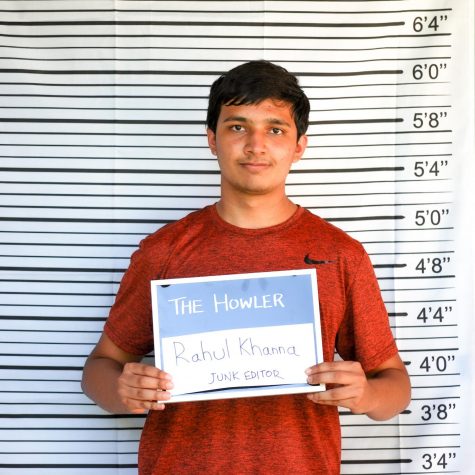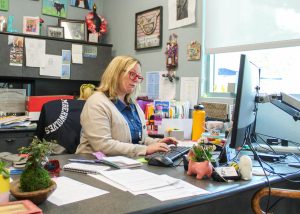DMV satisfaction revving up
March 22, 2021
DMV managers are reporting skyrocketing increases in the satisfaction ratings of customers, which mysteriously comes as offices close statewide due to COVID-19 surges.
Many data scientists have hypothesized that there is a correlation between the closing of DMV offices and the uptick in customer satisfaction, but nobody was able to make a definitive connection until Mohter Melinda, manager of the Santa Ana DMV, stepped in.
“It’s all in the numbers, really,” Melinda said. “Once I realized how upset people were with the current in-person DMV experience, I was able to diagnose the problem and come up with an effective solution.”
Melinda claims that customers were previously unhappy with the DMV experience because they were only able to spend 2-3 hours of their day there, before being forced to leave. She postulates that the new virtual environment allows customers to happily spend their entire day staring at the dynamic, rush-inducing DMV website. Customers can chill in the Zoom waiting rooms as opposed to sitting in the uncomfortable DMV chairs as well.
“If I concentrate, I can almost hear the crying of babies that were forced by their mothers to leave the DMV, and the celebration of teenagers that failed their Permit tests, meaning they would get the opportunity to come back in a week,” Melinda said. “The adrenaline rush of standing in line with people you never want to meet again, or the thrill you get when you move an extra spot up after only 45 minutes…it gets me pumped up!”
The data appears to confirm Melinda’s hypothesis—a recent study done by the Vroom Research Center found that over 94% of adults aged 18-30 considered a day at the DMV as one of the most exhilarating and patriotic experiences possible in America.
Customers have additionally made their opinions clear on the DMV’s exceptional communication skills. Instead of notifying customers of their appointments being cancelled beforehand, the DMV chooses to add an element of surprise by notifying customers only when they arrive at the location. The outbursts of emotion when customers hear the news can only be interpreted as a sign of their appreciation of the DMV’s efforts to make their lives more interesting.
In order to further elevate the DMV experience in the near future, Melinda plans to make customers not only fill out the paperwork in perfect cursive, but type up the forms entirely on a typewriter. She also plans to implement a “safety-form” policy, in which customers are required to not only fill out their own forms, but check at least 50 other customer’s forms to ensure accuracy.
“Our top analysts noted that the more paperwork we made customers do, the more passionate they got about the DMV,” Melinda said. “Last year when we doubled the number of forms people had to complete, I recall one gentleman standing up and crying before leaving, clearly overtaken by joy. I aspire to bring these feelings to as many people as possible.”
Melinda will also reduce the number of workers at the DMV to just one, in order to maximize the size of lines and give customers the greatest opportunities to discuss their shared love for the DMV amongst each other. The reductions, however, are not expected to make noticeable differences to wait times.
Unsurprisingly, the satisfaction rate of customers has continued surging amid the new changes. However, many “car”-servatives have expressed displeasure for the system.
“People ask me all the time when we will return back to normal,” Melinda said. “Honey, this is the new normal.”



![AAAAAND ANOTHER THING: [CENSORED] [REDACTED] [BABY SCREAMING] [SIRENS] [SILENCE].](https://thehowleronline.org/wp-content/uploads/2025/06/lucy-1200x800.jpg)
















































![AAAAAND ANOTHER THING: [CENSORED] [REDACTED] [BABY SCREAMING] [SIRENS] [SILENCE].](https://thehowleronline.org/wp-content/uploads/2025/06/lucy-300x200.jpg)



